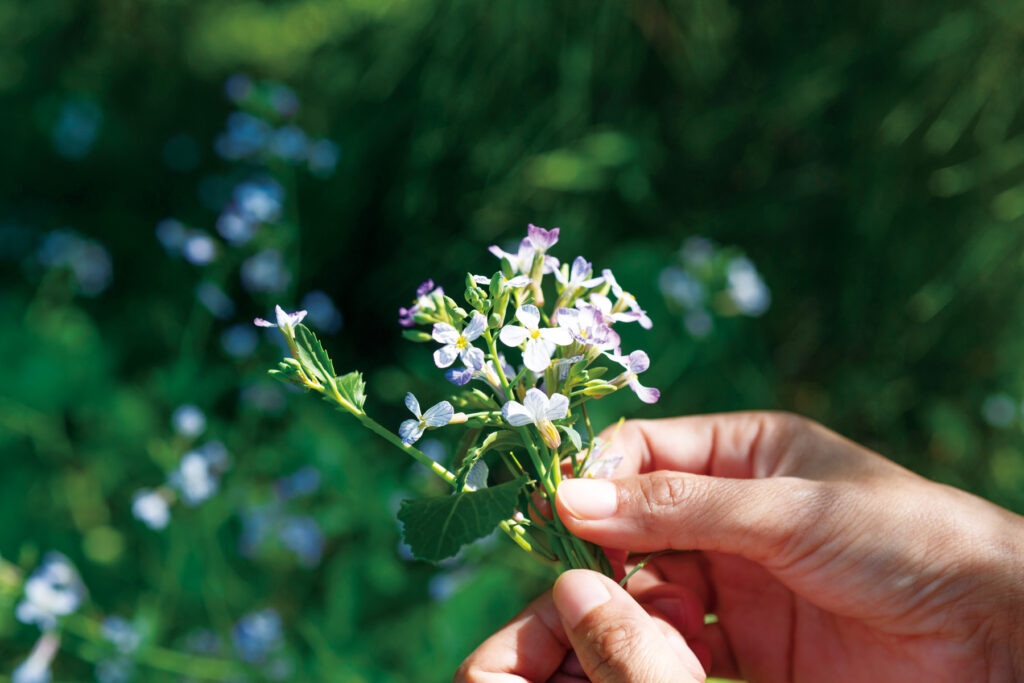
Listening to the silent sounds of nature
Many animals feed on grass. Their instinct tells them which plants are safe to eat. We humans are animals too, and I’d like to think we’re equipped with the same sixth sense for foraging. But stare as I might at a plant growing in front of me, I find it hard to tell whether it’s edible, what powers it might have, or how best to prepare and cook it. Each time I open my field guide to read up on the health benefits of an herb, it makes me sigh. Knowledge is just knowledge after all. What happened to my instinct?
The earthquake and tsunami disaster of 2011 was a wake-up call to the issue of radioactive leakage. It made me realize that in order to coexist with nature, we need to first hone our ability to feel its power—a power we were going to be relying on even more moving forward. Unable to sit still, I made a five-day trip (that’s one way) into the depths of the Amazon jungle in Brazil. If I spent some time in the Amazon, surely, I would learn to hear the sounds of nature. My plan may seem simplistic, but I was quite serious about it at the time. I met a medicine woman and asked her for advice, and she whispered to me, “It’s just a matter of you opening up your heart.”
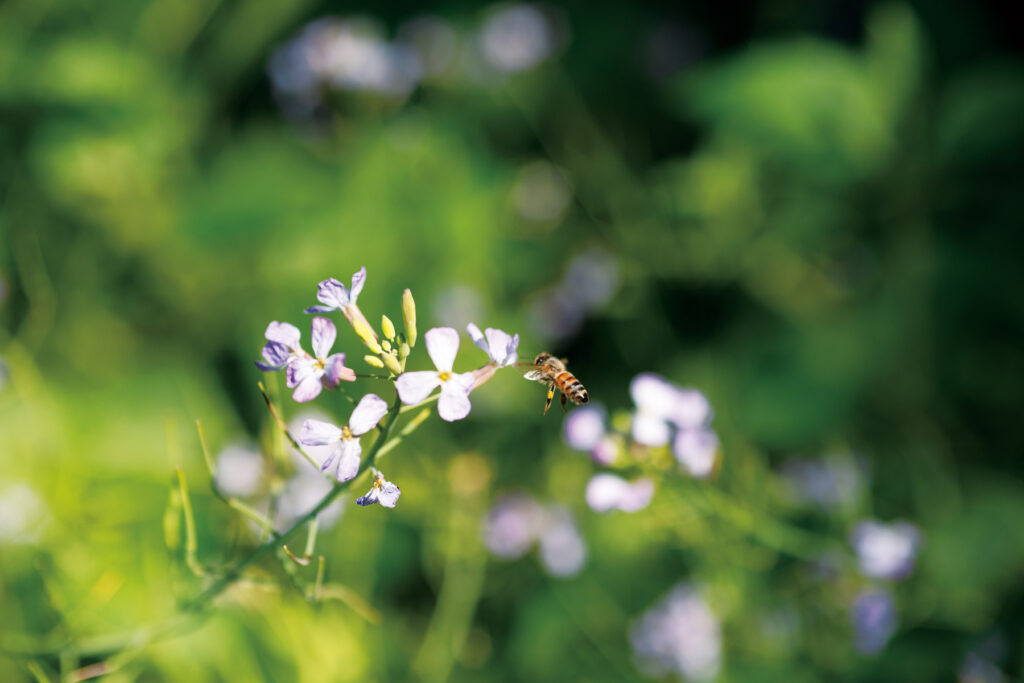
Without yet understanding what those words meant, I spent days in the jungle recalling, confronting, and healing from the emotions I had neglected and left in my heart unattended—sadness, anger, and loneliness. A dozen years on since that experience, now I understand what the medicine woman was saying. When ignored and left to accumulate inside us, emotions from the past engender uncertainty and anxiety, and this keeps us from accepting those emotions for what they are. We need to let our hearts vibrate, as softly and subtly as the vibration of plants, and once we’ve learned to tune in to that vibration, we will be able to hear the silent sounds of nature.
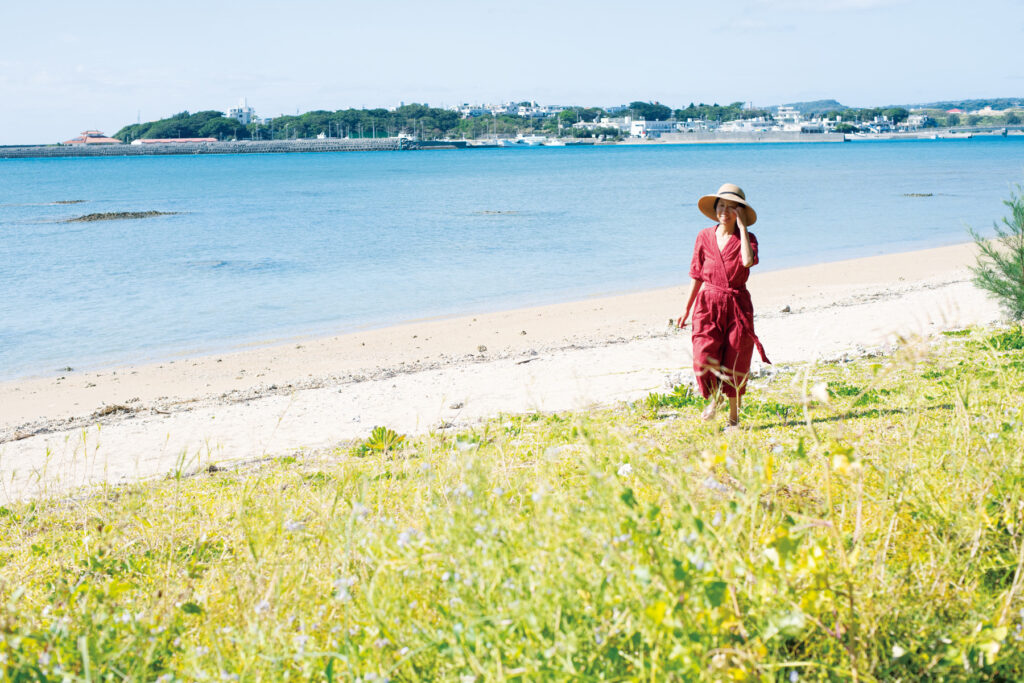
In daily life, when we’re pressed for time or preoccupied with next week’s plans, the vibration of plants may be the last thing on our minds. But when I find a weed, I try to tune in to its vibration, and sense its powers, and imagine good ways to prepare and cook it.
Take the Japanese wild radish for example. The roots are stiff but make a delicious tea. And the leaves and buds are delicious sautéed. That silent sound is a great source of inspiration.
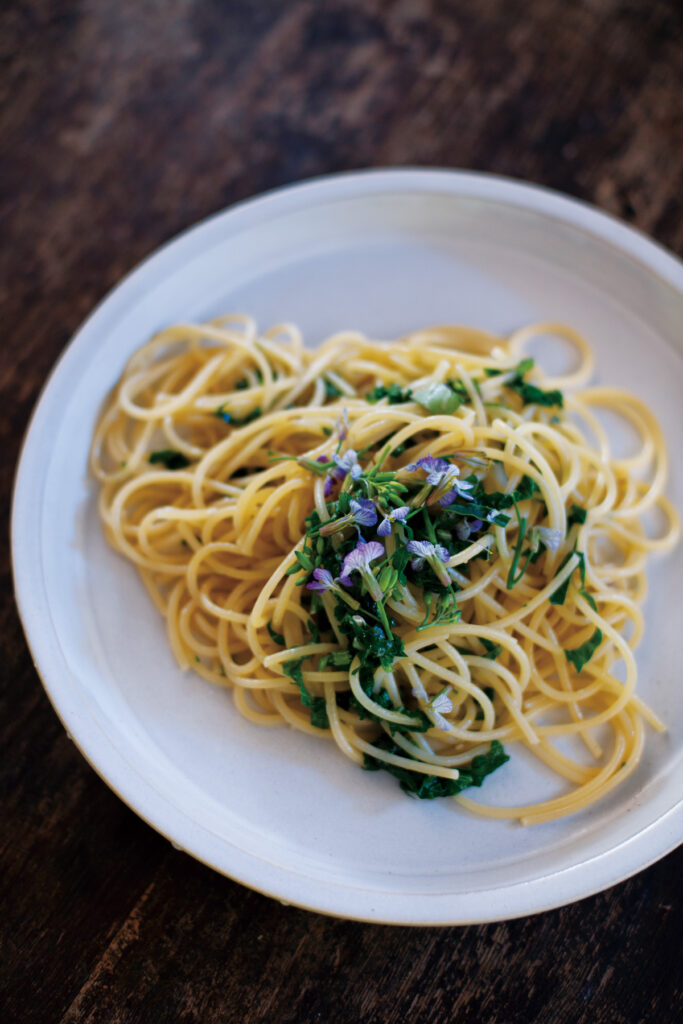
■Grass on the Plate Recipe 07
Japanese wild radish spaghetti
Ingredients
Japanese wild radish (leaf, flower)
Spaghetti
Natural salt
White miso
Water
Olive oil
Directions
1. Boil the spaghetti.
2. Chop the Japanese wild radish into bite-size pieces and sauté in heated olive oil.
3. Add the spaghetti to 2, season with the white miso dissolved in salt and a small amount of water, and sprinkle with the flowers.
■Plants Index
Weeds in this story
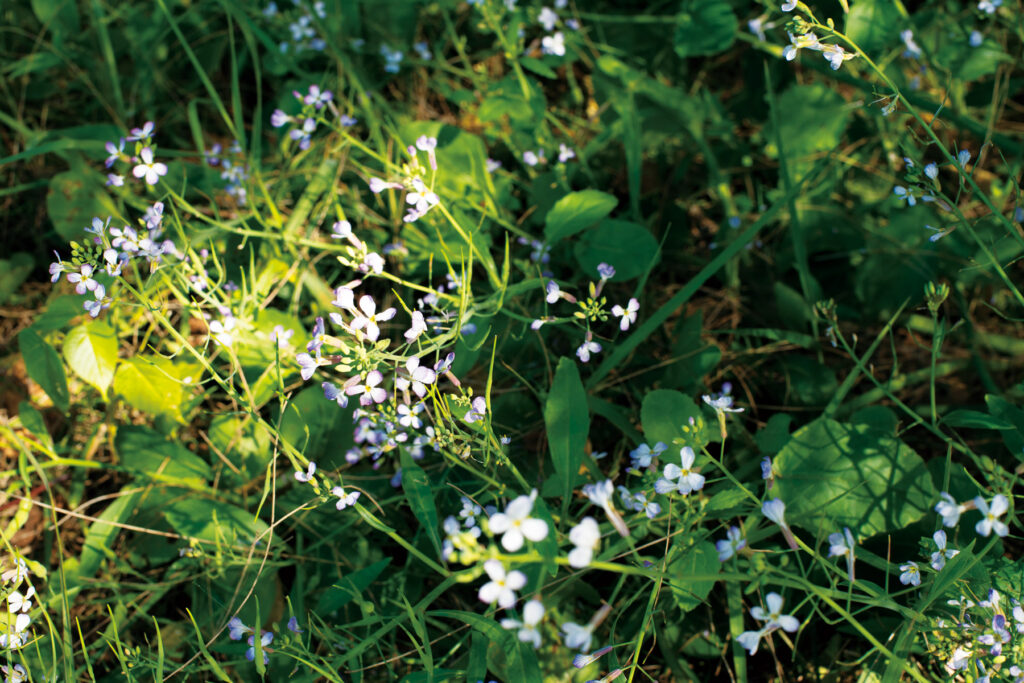
Japanese wild radish grows in the early summer. The stems reach 30–70 centimeters tall and bear racemose flowers with four petals. The clusters of pale purple and sometimes white flowers create a picturesque scenery. Both buds and flowers have a spicy taste.
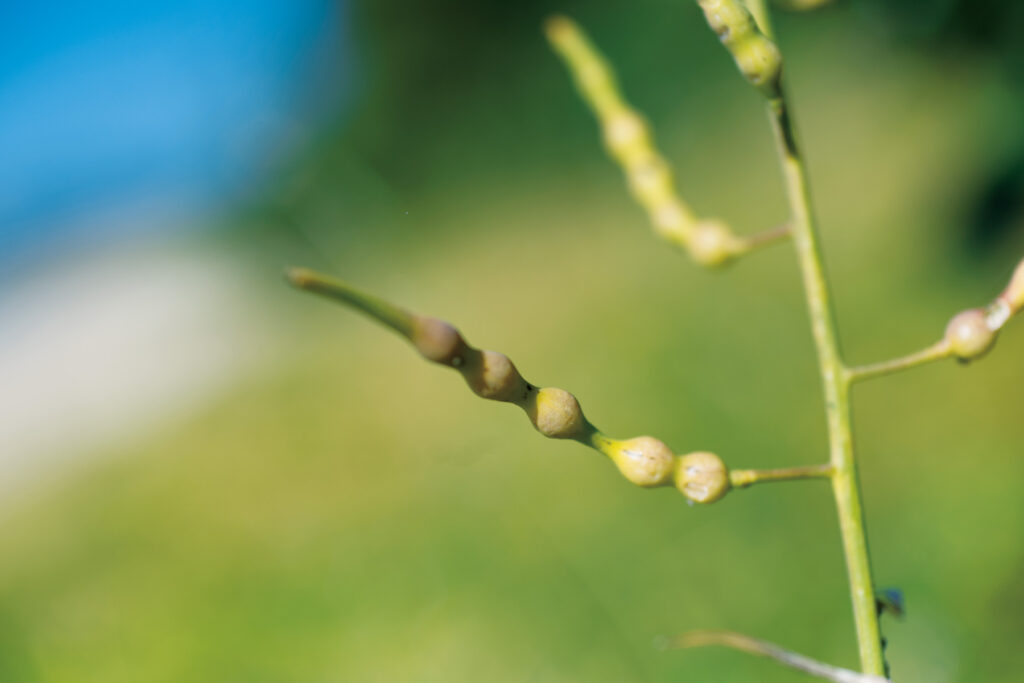
The flowers turn into pods containing seeds that mature in a corky interior that floats and allows dispersion by seawater. The small, newly formed pods are soft and provide a spicy accent for miso soup and salad.
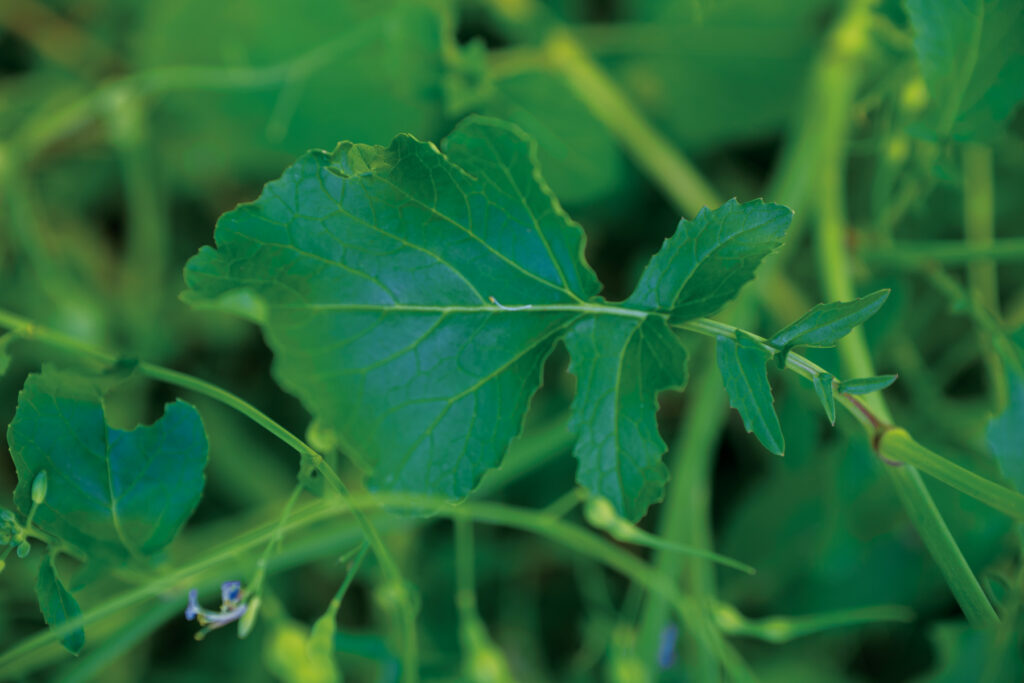
The biennial plant forms a rosette to pass the winter. The leaves taste very much the same as daikon grown in the field—they are good chopped, rubbed with salt, and served with rice. Dried leaves can be boiled down and added to the bath to keep the body warm.
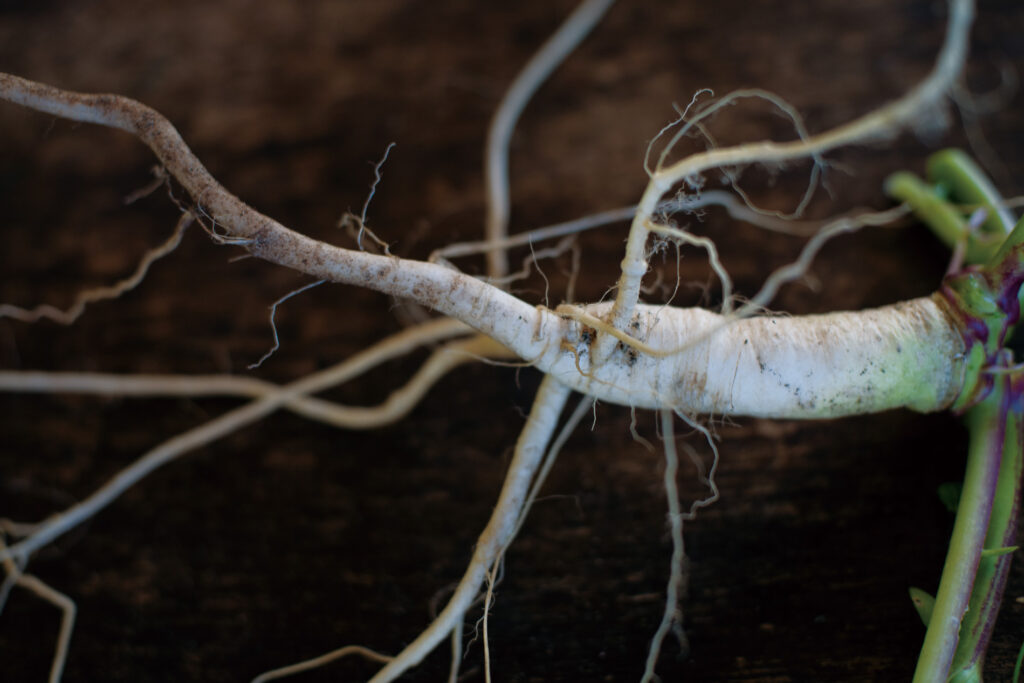
The roots do not grow as large as daikon in the field, and they have many lateral roots and fibrous roots. Tough, stiff, and spicy, the roots are not fit for eating. Instead, try boiling them into a delicious tea.
Yoco Kawashima
Guided by childhood memories of her love for “weeds,” Yoco Kawashima began artistic activities focused on weeds in 2000, traveling to seek knowledge and wisdom, and sharing what she learned in lessons and retreats. In 2022, she launched her REAL PLANTS line of products, and is currently offering the cleansing experience of Yomogi Salt. Publications include Ari-no-mama ikiru (Come As You Are; Lingkaran Books) and Bhutan ga oshiete kureta koto (Lessons from Bhutan; Anonima Studio). Kawashima lives in Okinawa Prefecture.











